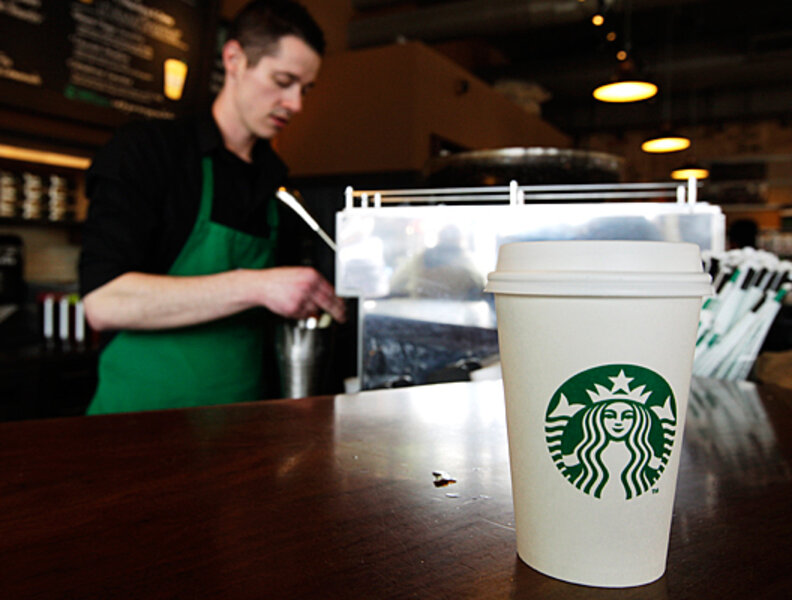Starbucks to post calories, ruin illusions
Starbucks will soon clear up any doubt – most of its drinks and food are loaded with calories.
Starbucks announced on Tuesday that it would post the calorie content of its beverages and pastries at all its stores beginning June 25, amidst mounting calls nationwide for greater transparency about nutritional information from major food retailors.
The new calorie postings, to be put on the beverages menu boards as well as in the pastry cases, will show that a grande carmel macchiato delivers about 240 calories, while a cinnamon chip scone packs some 480 calories.
“Menu labeling is yet another step to extend our commitment to wellness, ensuring our customers and partners (employees) have the information they need to make informed decisions and understand all the ways that they can customize their Starbucks beverages to be within their desired calorie range,” said Mary Wagner, senior vice president, Global Research & Development at Starbucks, in a press release.
Starbucks already offers the calorie content for all its products on its website, where it also suggests drink options under 200 calories and food choices under 350 calories. The press release also noted tat Starbucks has offered sugar-free syrup since 1997 and adopted 2 percent milk as the standard for its line of drinks in 2007. It also introduced a selection of salad bowls under 450 calories earlier this summer, the release said.
The federal government currently makes no demands on major food establishments to post their calorie information, but a proposed health mandate due to take in effect in 2014 would require food companies with more than 20 outlets to post those facts.
Still, some companies have already begun ahead of the measure to post calories, in a bid to win health-conscious fans. Starbucks joins chain food establishments McDonald's, Panera Bread, and Au Bon Pain in posting calorie information in its stores.
Some US localities have their own regulations that mandate calorie posting. In New York City, for example, food chains with more than 15 stores are required to post calorie counts on their menu boards. When burger chain Shake Shack opened its 15th US outlet in Connecticut last fall, it began posting the calories in its burgers and shakes – a meal there, including a burger, fries, and a chocolate shake, has just under 2,000 calories – at its seven locations in the city. Under that local regulation, Starbucks also posts its calories there.
After recovering from tough times in 2009, business is booming for the Seattle-based Starbucks, which operates about 11,000 stores in the United States and another 6,000 or so outside America. In the second quarter of the 2013 fiscal year, the company reported 7 percent national sales growth, as well as a record revenue of $3.6 billion.
But the company has also received criticism for at times opaque practices. In March, it was discovered that the fluorescent pink coloring used in its Strawberry Frappuccinos contained cochineal extract, a dye made from crushed insects.







